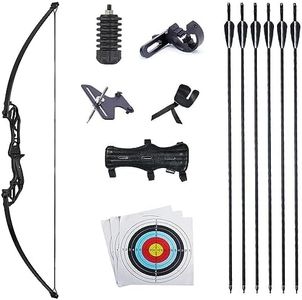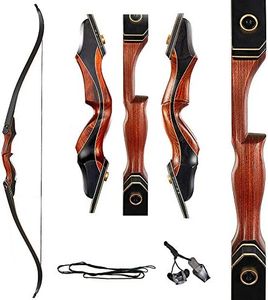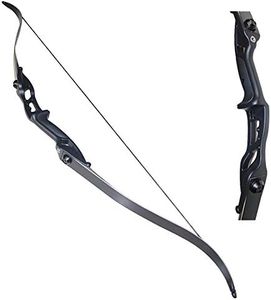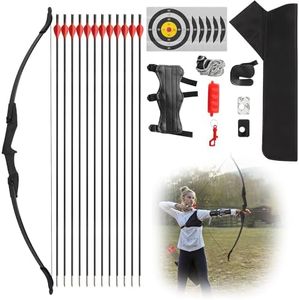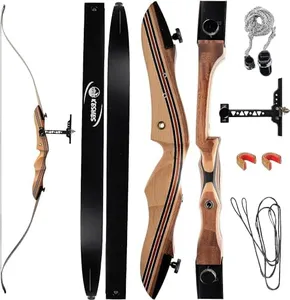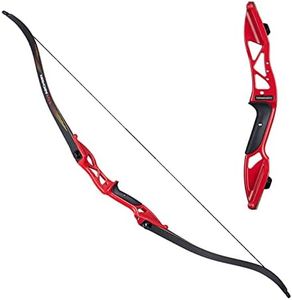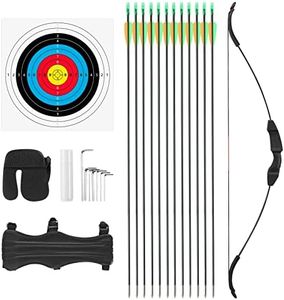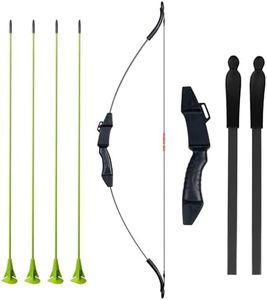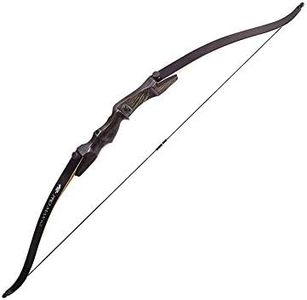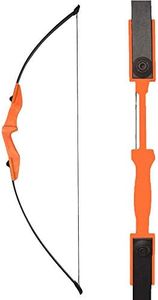We Use CookiesWe use cookies to enhance the security, performance,
functionality and for analytical and promotional activities. By continuing to browse this site you
are agreeing to our privacy policy
10 Best Recurve Bow For Youth
From leading brands and best sellers available on the web.Buying Guide for the Best Recurve Bow For Youth
Choosing a recurve bow for youth is all about finding a model that matches the user's age, strength, and intended use. Whether the goal is casual backyard shooting or stepping into beginner archery classes, picking the right bow can make the learning process safer, more enjoyable, and help develop proper technique. Key factors like size, draw weight, and the type of materials will determine how comfortable and rewarding the experience will be for the young archer. Prioritizing comfort and usability will help ensure lasting interest and progress in the sport.Draw WeightDraw weight refers to the amount of force needed to pull the bowstring back. This is important because a bow that's too heavy can be difficult and discouraging to shoot, while one that's too light may not challenge the archer or allow for proper skill development. For youth, draw weights commonly range from about 10 to 20 pounds. Younger or smaller children should stick to the lower end of the scale (10-15 lbs) for ease and safety, while older or stronger teens might be comfortable closer to 15-20 lbs. To pick the right draw weight, consider the age, physical strength, and experience level of the youth—being able to pull the string smoothly and shoot comfortably is key.
Bow LengthBow length is the total length of the bow measured from tip to tip. This matters because it affects both ease of handling and the accuracy of shots. Youth bows generally range from about 48 to 64 inches. Shorter bows (under 54 inches) are well-suited for smaller kids as they're easier to manage, while longer bows provide more forgiveness and stability for taller or older youths. The right length should allow the archer to hold and operate the bow with control—a good rule is to match the bow's length to the archer's height and arm span.
Draw LengthDraw length is the distance you pull the bowstring back before releasing the shot. This is important because matching the bow’s design to the archer’s draw length ensures the bow is comfortable to use and shoots safely and accurately. Youth typically have shorter draw lengths, from around 18 to 24 inches. A bow that's too long might be hard to aim and shoot accurately, while one that's too short can be awkward. Usually, measuring the arm span and dividing by 2.5 gives an estimate of draw length; make sure the bow is rated for the user's draw.
Riser and Limb MaterialThe riser is the central handle section of the bow, while the limbs are the flexible parts that bend during use. These components can be made from wood, fiberglass, or composites. Material matters because it affects the weight, durability, and feel of the bow. Lightweight wooden or composite risers are good for youth since they're easier to hold for extended sessions. Fiberglass limbs are commonly used for youth bows as they are tough, affordable, and forgiving for beginners. The right choice here generally comes down to comfort and ease of handling rather than performance.
Right-Handed vs. Left-HandedWhether the bow is right-handed or left-handed depends on which eye is dominant and which hand the youth uses to draw the string. This is crucial since using the wrong configuration can lead to awkward shooting and less accurate results. Right-handed bows are held in the left hand and drawn with the right, while left-handed bows are the opposite. To decide, have the youth try both types if unsure, but generally, choose the type that matches their dominant eye and hand.
AdjustabilitySome recurve bows for youth have adjustable draw weights or limbs that can be swapped out as the archer grows. This is valuable because it allows the bow to grow with the child and adapt to their increasing strength and skill. If you anticipate growth or want a bow that lasts several years, choosing an adjustable model can be a wise choice. Adjustability helps ensure continued use and a good fit over time, keeping archery enjoyable as the user develops.
